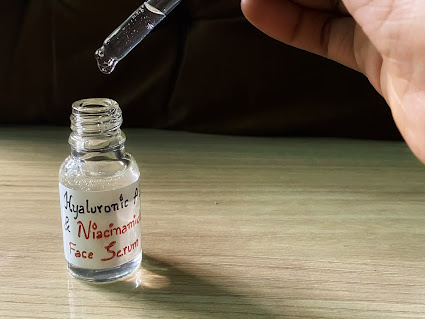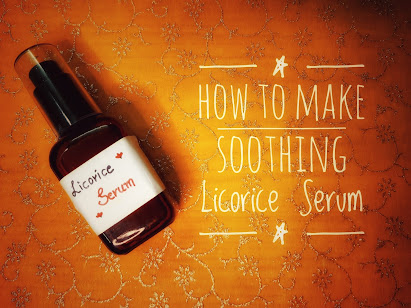DIY Creams 101 Part 1- Basics of Cream Formulation
Many has requested me to make videos and blogs on basics, like how I make different products and how do I calculate percentage of each ingredients. So, I have planned this series where we would discuss what a product contains in Part 1, how to make a basic one in Part 2 and how to add actives or more ingredients in Part 3 which is a little advanced topic. All of these would be from my experience and point of view. There can be different versions from different formulators.
If you like to watch the video, here it is link
The first one that I have decided to make is creams since I am working on few creams from last few weeks. I would like to add them in Part 2 and Part 3.
Cream is a thicker emulsion consisting of oils(lipids) and water. We all know that oils and water doesn't mix and we need an emulsifier to form an emulsion. Often beeswax is confused as an emulsifier but it isn't an emulsifier alone. Beeswax is combined with Borax and Lye to form an emulsion before the invention of new emulsifiers. We now have access to wide range of emulsifiers varying from natural to non-palm to synthetic with anionic, non-ionic and cationic properties. Also, the feel differs with each. It is much easier to use these emulsifiers.
I also want to highlight on preservatives because the word preservatives and the search in google about cosmetic preservatives seems scary. But what's more scary is the growth of bacteria, mold in a product which doesn't appear to eyes and can cause damage to skin if applied. There are different preservatives for different kind of products like leave on, rinse off and also for products with different pH . It preserves products for a good period of time, then why not use it.
Let's see the basic structure of a cream formulation.
This can be used as a template to make your own cream or a lotion.
There are three phases
1) Heated Oil Phase
2) Heated Water Phase
3) Cool Down Phase
The usage rates mentioned are in general. It can vary with ingredients and suppliers.
Heated Oil Phase: We say it as heated oil phase since most ingredients need to be melted. Also, for emulsification, both the phases need to be heated. Oil soluble heat stable ingredients are added in this phase.
Heated water phase: Water soluble heat stable ingredients are added in this phase.
Cool down phase: Ingredients which are sensitive to heat are added in this phase.
1) Oils: Oils can be natural ones or synthetic ones like dimethicone or cyclomethicone. There are few oils which have light feel on skin while few have heavy feel. Different oils result in different texture, appearance in end product. They are available in refined and un-refined form.
- Some of the light feel oils are Grape seed oil, Almond oil, Jojoba oil.
- Some of the heavy feel oils are Pomegranate seed oil, castor oil.
- There are few oils which are rich in anti-oxidants like sea buckthorn oil and rosehip oil.
- Some oils are healing like Tamanu oil and black seed oil.
- Silicone oils like dimethicone and cyclomethicone improve the overall feel of the product. It has non-greasy and smooth feel.
- Examples of natural butters are ,mango butter, shea butter, kokum butter and cocoa butter.
- There are few modified butters which are not true butters but are modified to be solid. Examples are Green tea butter, almond butter
- Examples are beeswax, candelilla wax (vegan), carnauba wax (vegan), berry wax.
- There are floral waxes which are by-phase products in distilling aroma chemicals. Examples are Jasmine wax, rose wax etc.
- Cationic emulsifiers have positive charge. Examples: BTMS 50, Behentrimonium chloride.
- Non-ionic emulsifiers have neutral charge. Example: Olivem 1000
- Anionic emulsifiers have negative charge. Example: GMS
- There are natural emulsifiers which are approved by natural bodies like ecocert. Examples:
- Olivem 1000 (non ionic)
- Montanov 68 (non ionic)
- Oleamuls (non ionic)
- Verisoft EQ 65 (Cationic)
- Emulsense HC (Cationic)
- Synthetic emulsifiers are used from a long time. Examples:
- Emulsifying Wax NF (non ionic)
- Polawax (non ionic)
- BTMS 50 (cationic)
- Glycerin
- Sodium Lactate
- Propanediol 1,3
- Hydrovance (Hydroxy ethyl urea)
- Sorbitol
10) *Preservative: Preservatives are must whenever water is used in the formulation. Without preservative, product will not be safe for more than 3 days(stored in fridge). Preservatives can be natural or synthetic.
- Euxyl PE 9010
- Optiphen
- Iscaguard PEG
- DMDM Hydantoin
- Liquid Germall Plus
- Euxyl K 712
- Preservative Eco/ Geogard ECT
- Spectrastat G2
- Geogard Ultra
- Hyaluronic acid
- Aquaxyl
- Pentavitin
- Panthenol or Pro-Vitamin B5
- Allantoin
- Niacinamide
- Vitamin C & its derivatives (MAP, SAP etc.)
- Kojic Acid Dipalmitate
- Lactic acid
- Glycolic acid
- Salicylic acid
- Colloidal Oats
- Chamomile extract
- Calendula extract
- Tamarindus indica
- Aloevera extract
- Green tea extract
- Licorice extract
- Turmeric extract
- ACB Fruit Mix
- Kakadu plum extract
- Floral
- Fruity
- Aloevera
- Green tea
- Exotic
- Ylang-Ylang E.O
- Lavender E.O
- Rose geranium E.O
- Tea tree E.O
- Frankincense E.O
- Sandalwood E.O
- Rosewood E.O
- EDTA (Synthetic)
- Sodium Gluconate (Natural)
- Dermofeel PA3 (Natural)
- Vitamin E Tocopherol (product)
- Mixed Tocopherols (product)
- Tocopherol Acetate (skin)
- Rosemary Oleoresin (natural)




Comments
I somehow could not reply on main thread, sorry.